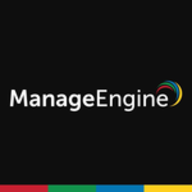

Splunk Enterprise Security and ManageEngine FileAudit Plus compete in the security and audit space. Splunk Enterprise Security has an upper hand in terms of advanced analytics and integration capabilities, whereas ManageEngine File Audit Plus benefits from straightforward deployment and cost-effectiveness.
Features: Splunk Enterprise Security provides advanced threat intelligence, comprehensive data visualization, and integration with various security tools, making it suitable for complex environments. ManageEngine File Audit Plus offers robust file integrity monitoring, real-time alerting, and user-friendly reporting features.
Ease of Deployment and Customer Service: Splunk Enterprise Security involves a complex deployment process, supported by comprehensive resources and detailed documentation. ManageEngine File Audit Plus allows for a simpler deployment process with extensive customer support, making it more accessible for smaller organizations.
Pricing and ROI: Splunk Enterprise Security requires a higher initial investment but offers significant long-term value with enhanced security features and analytics capabilities. ManageEngine File Audit Plus is more budget-friendly, enabling quicker start-up and providing good ROI through efficient file auditing.
| Product | Market Share (%) |
|---|---|
| Splunk Enterprise Security | 7.7% |
| ManageEngine File Audit Plus | 0.2% |
| Other | 92.1% |

| Company Size | Count |
|---|---|
| Small Business | 110 |
| Midsize Enterprise | 50 |
| Large Enterprise | 257 |
ManageEngine FileAudit Plus is an agent-based file auditing and reporting software. Monitor in real-time the changes to all files in the file system along with thorough reports on every activity as to 'who' did 'what', 'when' and 'from where'. Keep track of changes made to the files, file objects in the folders or sub-folders and shares. Watch out for any changes made to a particular type of file (for e.g. *.log) or choose to exclude servers and file types.
Any good organization's security policies would recommend the use of a real-time file monitoring tool to continuously monitor the system files and Compliance standards like PCI DSS (11.5), Sarbanes-Oxley (Section 404), FISMA (NIST SP800-53) specifically regulate the need to perform periodic checks for any unauthorized modification of critical files on Windows File servers (system files, configuration files or text files; and ensure a reporting activity for periodic security analysis or for forensics in the event of a security breach.
With FileAudit Plus, keep a detailed record of every file access and activity, get email alerts for critical / unusual activities, monitor file permissions, identify file owners and meet Compliance requirements.
Splunk Enterprise Security delivers powerful log management, rapid searches, and intuitive dashboards, enhancing real-time analytics and security measures. Its advanced machine learning and wide system compatibility streamline threat detection and incident response across diverse IT environments.
Splunk Enterprise Security stands out in security operations with robust features like comprehensive threat intelligence and seamless data integration. Its real-time analytics and customizable queries enable proactive threat analysis and efficient incident response. Integration with multiple third-party feeds allows detailed threat correlation and streamlined data visualization. Users find the intuitive UI and broad compatibility support efficient threat detection while reducing false positives. Despite its strengths, areas such as visualization capabilities and integration processes with cloud environments need enhancement. Users face a high learning curve, and improvements in automation, AI, documentation, and training are desired to maximize its potential.
What Are the Key Features of Splunk Enterprise Security?In specific industries like finance and healthcare, Splunk Enterprise Security is instrumental for log aggregation, SIEM functionalities, and compliance monitoring. Companies leverage its capabilities for proactive threat analysis and response, ensuring comprehensive security monitoring and integration with various tools for heightened operational intelligence.
We monitor all Log Management reviews to prevent fraudulent reviews and keep review quality high. We do not post reviews by company employees or direct competitors. We validate each review for authenticity via cross-reference with LinkedIn, and personal follow-up with the reviewer when necessary.